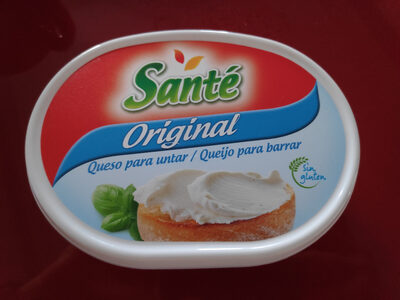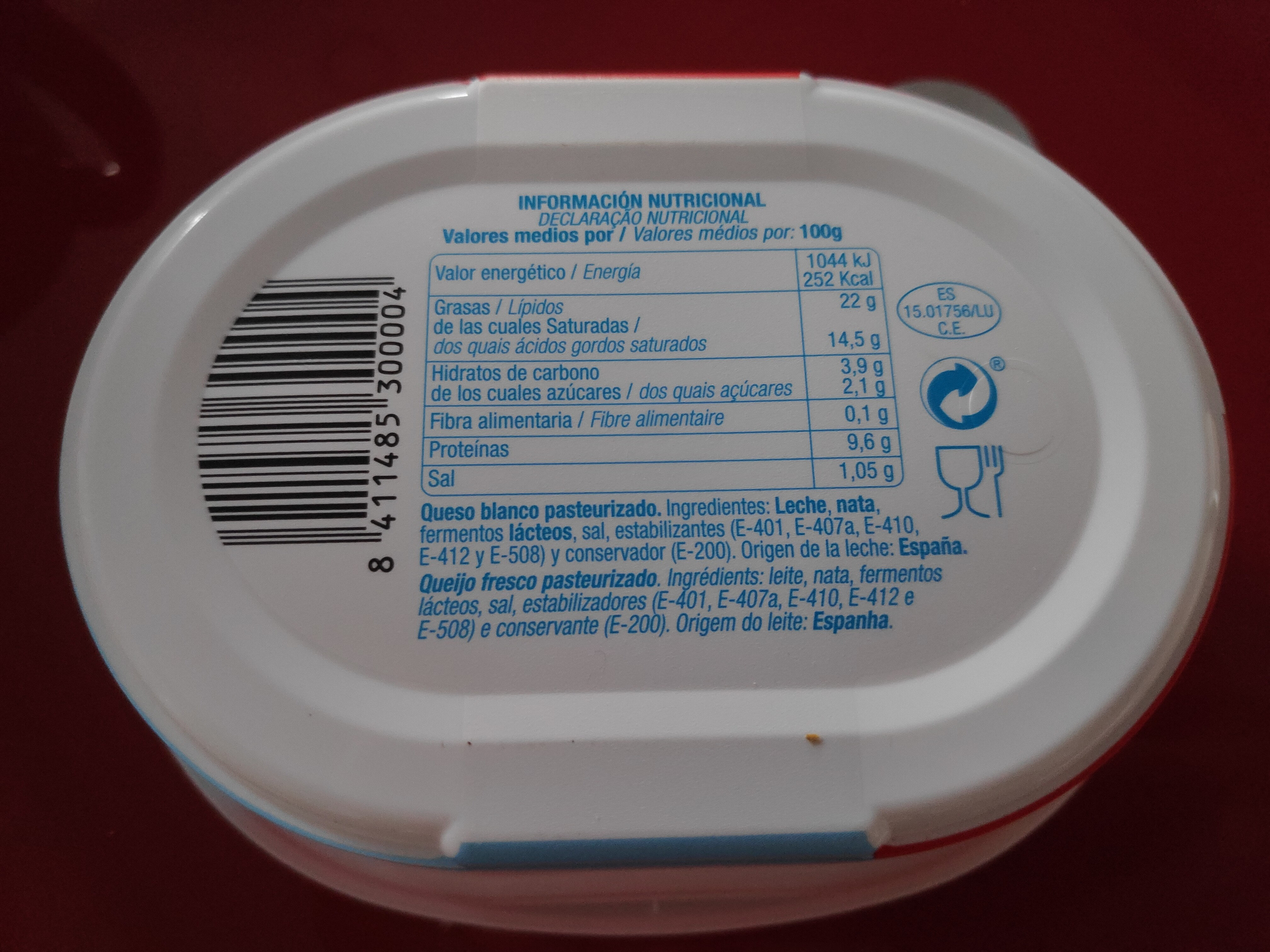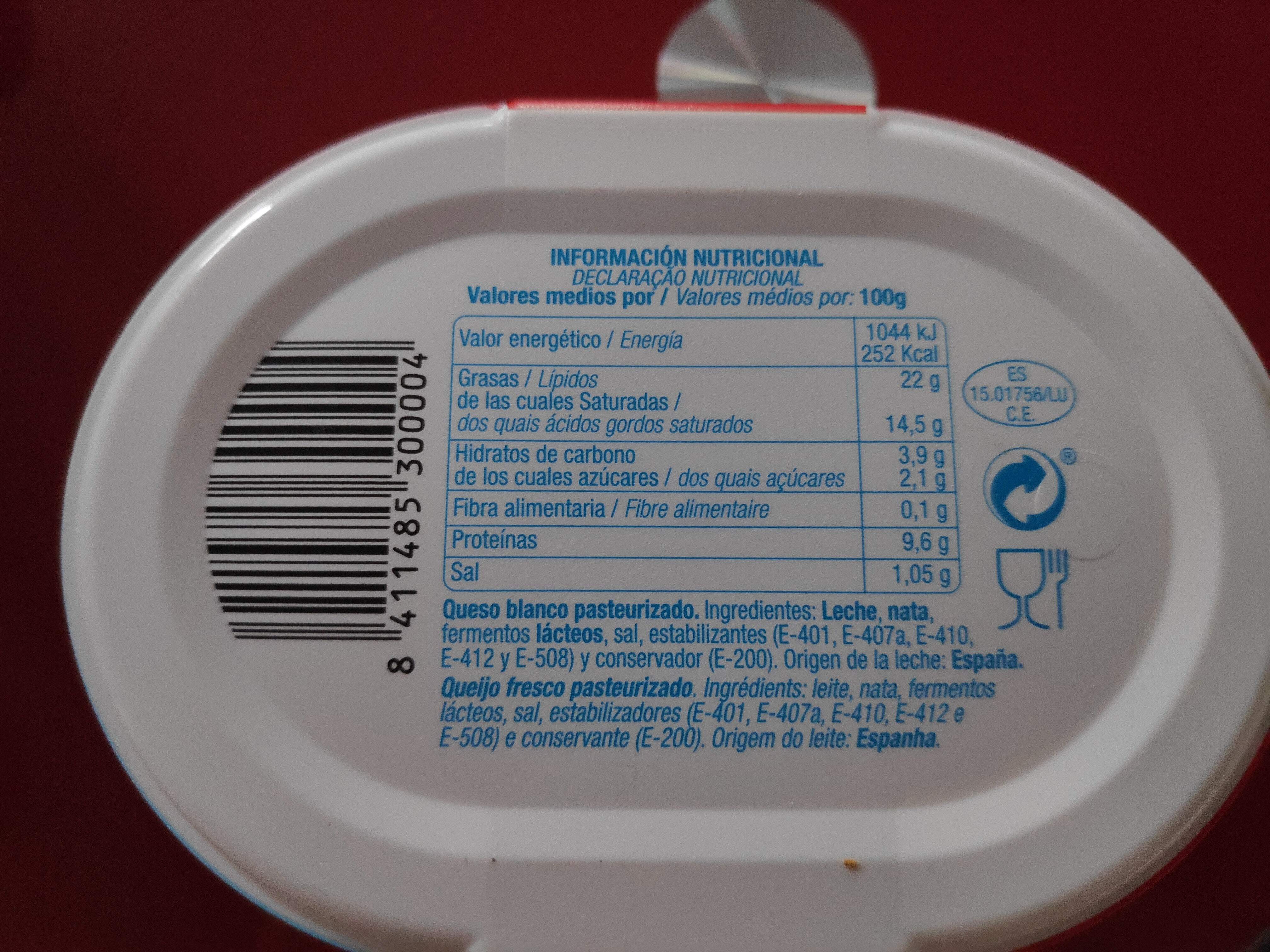Queso para untar original - Santé - 200 g
Ambiguous barcode: This product has a Restricted Circulation Number barcode for products within a company. This means that different producers and stores can use the same barcode for different products.
×
This product page is not complete. You can help to complete it by editing it and adding more data from the photos we have, or by taking more photos using the app for Android or iPhone/iPad. Thank you!
×
Barcode: 06818031
Quantity: 200 g
Packaging: Plastic
Brands: Santé
Categories: Dairies, Fermented foods, Fermented milk products, Cheeses, Spreads, Salted spreads, Cheese spreads
Labels, certifications, awards: No gluten
Origin of ingredients: Spain
Manufacturing or processing places: España
Traceability code: ES 15.01756/LU CE
Countries where sold: Spain
Matching with your preferences
Environment
Carbon footprint
Packaging
Transportation
Report a problem
Data sources
Product added on by openfoodfacts-contributors
Last edit of product page on by roboto-app.
Product page also edited by off.51c79e45-3598-4dda-8df9-32af64702d12, packbot, thaialagata.











